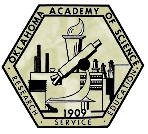DR. PAUL DEVLIN
AWARD OF MERIT RECIPIENT FOR 1986

Paul Devlin, a native of Colorado, began his studies in chemistry at Regis College in Denver where he received a B.S. degree in 1956. He then joined the spectroscopic research program of Clarence Hisatsune at Kansas State University. After completing his PhD in 1960, he spent a year in the spectroscopy laboratory of Bryce L. Crawford and John Overend at the University of Minnesota studying the molecular force fields of the cyanoethylene series. He joined the faculty of Oklahoma State University in 1961 and initiated a program applying spectroscopic methods to the solution of physical chemical problems. During the 1960s, attention was focused on the structural properties of associated liquids, such as water and molten salts, as well as the optical properties of solid-state charge-transfer complexes. The latter studies led to investigations of the radical anion salts of the strong p-acid tetracyanoethylene, using solvent-free low-temperature vacuum techniques, which demonstrated quite clearly the effect of electron transfer on the bond strengths of conjugated molecules.
The molten salt studies were informative of the structures of associated liquids but, more significantly, led to the discovery that vapors over many oxyanion salts (e.g., LiNO3) consist chiefly of the monomeric ion pair. This made possible the isolation of simple ion pairs in a variety of media, such as solid argon matrices and those containing varying amounts of solvent molecules. Spectroscopic studies of these isolated and solvated ion pairs, which have continued since 1970, have produced unique insights to the details of ion pair solvation. More recently Paul's research interests have dealt with the concentration and mobilities of point defects in ice and icelike substances. A novel and powerful spectroscopic method for following the activity of ion and orientational defects in hydrogen-bonded solids has been developed that promises to reveal details of the mechanism of proton conductivity and the crystallization of icelike substances, and the influence of various conditions on these phenomena.
Paul's enthusiasm and capabilities for research have been renewed through sabbatical periods spent with Professors Jack Decius at Oregon State University (1969) and John Bertie at the University of Alberta (1982). This enthusiasm has been sustained by the opportunity to work with many capable young scientists in his own laboratory. Twelve doctoral and seven master's students have completed theses under his direction. Former students/postdoctoral associates presently occupy faculty positions at Drexel, de Campinas (Brazil), New South Wales (Australia), Ohio University, and University of Florida. For twenty-five years his research program has been funded continuously by the basic chemistry division of the National Science Foundation; the total support, including instrumentation, has exceeded a million dollars. Research funds have also been provided by the National Institutes of Health and the Department of Energy. This funding, combined with the steady support of Oklahoma State University, has resulted in ninety papers in international journals and several major review articles.
Paul has previously been honored as the OSU Sigma Xi chapter lecturer (1984), as the outstanding alumnus lecturer, Department of Chemistry, Kansas State University (1971), and as a member of Who's Who in America (1980). He has served on review panels for the National Academy of Science and reviews papers for such journals as Journal of Chemical Physics, Journal of Physical Chemistry and the Journal of the American Chemical Society. He is currently one of two U.S. members of a committee responsible for organizing international conferences on the chemistry and physics of ice.


